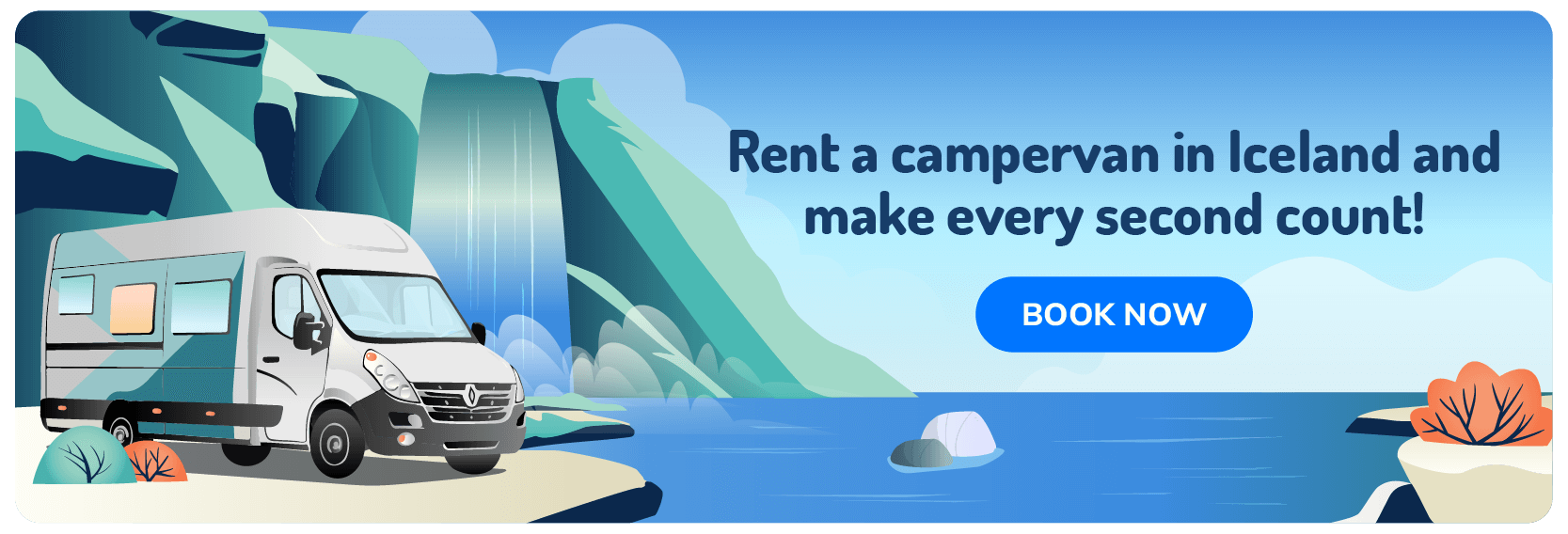The best way of exploring the island is by road-tripping around the country. And the most exciting and affordable way of doing that is in a campervan. Whether you have limited time on the island or would just like to plan a shorter road trip that gives you a taste of most of what Iceland has to offer, then you should look into an Iceland itinerary for 5 days.
From our most famous attractions along the Golden Circle to our breathtaking coastline – you can explore this and more in 5 days in Iceland. This article gives you a detailed breakdown of such a 5-day adventure and gives you some helpful tips so you have a safe and memorable trip.
Why a Campervan is the Best Way to Explore Iceland in 5 Days
There are many advantages to renting a campervan in Iceland. These include:
- It gives you flexibility and freedom. You won’t have to follow the strict schedule of a guided tour, and you’re not reliant on strict check-in or check-out times of pre-booked guesthouses or hotels. With a camper, you truly are the captain of your own Iceland adventure.
- It’s a very cost-effective way to travel. Accommodation is one of the biggest expenses on any holiday, and by renting a camper, you have sorted out both your housing and your transport. You will also be able to take advantage of our beautiful but super affordable campgrounds, especially if you purchase our Camping Card, which will save you even more money!

- It gives you all the creature comforts of any other accommodation, which means you don’t need to “rough” it to live affordably or go camping. It also extends the period you’ll be able to go camping since traditional campers will already or still be struggling with the weather conditions during fall or early spring.
- It can actually give you a front-row ticket to some of the most immersive experiences, with our most famous attractions practically on your doorstep. For example, when you wake up at Skogar Campsite, you can have a view of Skogafoss Waterfall from your window!
- The never-ending packing and unpacking at every stop during a road trip has been averted. You’ll only need to unpack once and then simply travel with your little home and all its items wherever you go.
Where to Park and Camp Legally in Iceland
Iceland had major issues resulting from the island becoming more and more popular as a travel destination (who could blame them?) as well as the rise of the “van life” lifestyle. The increased traffic (both two-legged and four-wheeled) had a devastating impact on our environment and the privacy of locals.
It became normal to find a camper parked overnight on your land only to realize they trampled delicate flora, such as our rare moss species. So, in 2015, new laws were passed, dictating very clearly where campers were allowed to park and camp. Adhere to the following, and you won’t have any trouble along your travels:

- Never stop or park along the road – it is illegal and can result in hefty fines.
- Only park in designated parking spots.
- Ensure you don’t park in the designated parking spot of a local resident when you’re in one of our towns or cities.
- Do not attempt to overnight in a parking spot – that’s not what they’re for.
- Only camp in designated camping spots in official campsites around Iceland. This also includes our national parks.
- You’re allowed to park and camp with your campervan on private property, but only if you have explicit permission from the property owner. It’s also a common courtesy not to stay more than one night.
How to Find Legal Campsites in Iceland
The best ways to find legal campsites in Iceland are by checking out the Tjalda.is website or downloading apps like Parka, NorCamp, or iOverlander. Alternatively, you can also check out this Google map of campsites in Iceland.
Some of the Best Campervan Parking Locations in Iceland
Below is a list of some of the best campervan parking spots in Iceland based on location and breathtaking scenery:
The Best Campsites Along the 5-Day Iceland Itinerary Route
Below are some of the best campsites to consider on your 5-day route through Iceland:
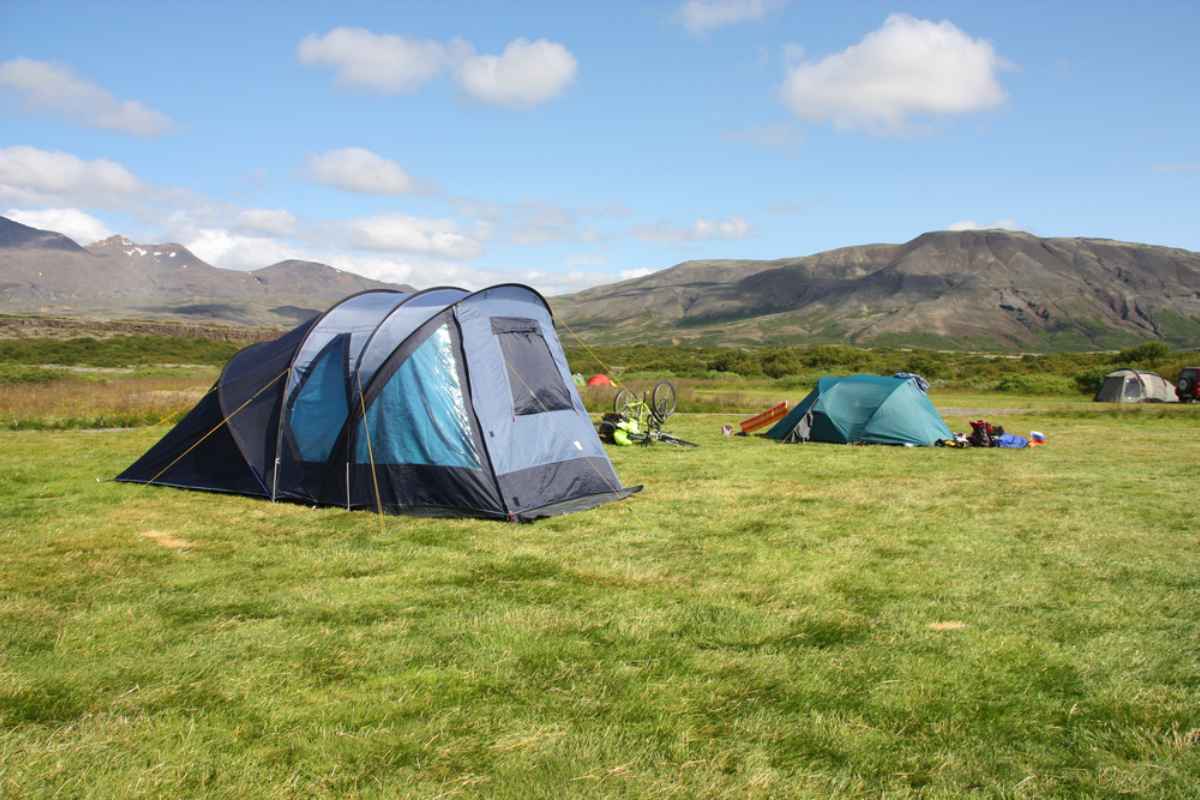
- Thorsmork Campground
- Reykjavik Eco Campsite
- Thingvellir Campsite
- Reykjamörk Hveragerdi Campsite
- Vik Campsite
- Kirkjubæjar Campsite
- Kerlingarfjöll Campsite
- Hveravellir Campsite
Some of Our Most Scenic Campsites
The following campsites have a bit of a reputation (the good kind) for their beautiful views and close proximity to some of our most famous natural wonders:
- Skaftafell Campground (near Jokulsarlon Glacier Lagoon)
- Skogar Campground (practically with Skogafoss Waterfall on your doorstep)
- Camping at Landmannalaugar (near some of our famous natural hot springs, such as the Secret Lagoon)
What to Pack for Your 5-Day Camper Trip to Iceland
We obviously won’t be going into detail and trying to tell you how much underwear to pack on your holiday as if we were your mother. But we can definitely tell you a few things you may not have thought of when it comes to a campervan adventure in Iceland:

In terms of clothing:
- Bring plenty of waterproof clothing, waterproof hiking boots, and a raincoat. This is not just to be prepared for any unexpected showers but also comes in handy at our hot springs, muddy hiking trails, and powerful waterfalls with their mist and spray.
- Always pack your clothes so you can dress in layers. The island’s saying, “You can experience all four seasons in a day in Iceland,” applies. By wearing layers, you’ll always be able to take something off or put something on based on the circumstances.
- Remember all your extremities! This means a warm hat (we recommend a comfortable woolen beanie), gloves, and a scarf.
Camping Gear:
- This is obviously not necessary when you’ve got your comfy camper. However, some just want to experience some traditional camping during their trip. Needless to say, camping gear is not included with your campervan, and you’ll either need to bring it along or go shopping in our famous shopping street, Laugavegur.
Electronics:
- A camera (if you’re not planning on being a mobile photographer).
- A power bank.
- A European adapter (if you’re coming from outside the EU).

Personal Items:
- Please remember any/all essential medications. Just keep flight and custom restrictions in mind.
- Bring a reusable water bottle. Iceland is famous for some of the purest water in the world – straight from the tap! So, you simply need to top up along the way.
- Bring moisturizer and lip balm! Trust us on this one; you’ve probably never known dry skin and chapped lips like you do in Iceland.
Our 5-Day Iceland Itinerary – The Perfect Self-Drive Route
If you’re at a loss of where to start planning the perfect 5-day itinerary for Iceland, then you can use ours, or at least use it as a starting point and for some inspiration. This trip itinerary includes many of our main attractions as well as a few hidden gems and covers 1300 kilometers (808 miles):
Day 1: Arrival in Reykjavik and the Golden Circle
Driving Distance: 300 kilometers (186 miles)
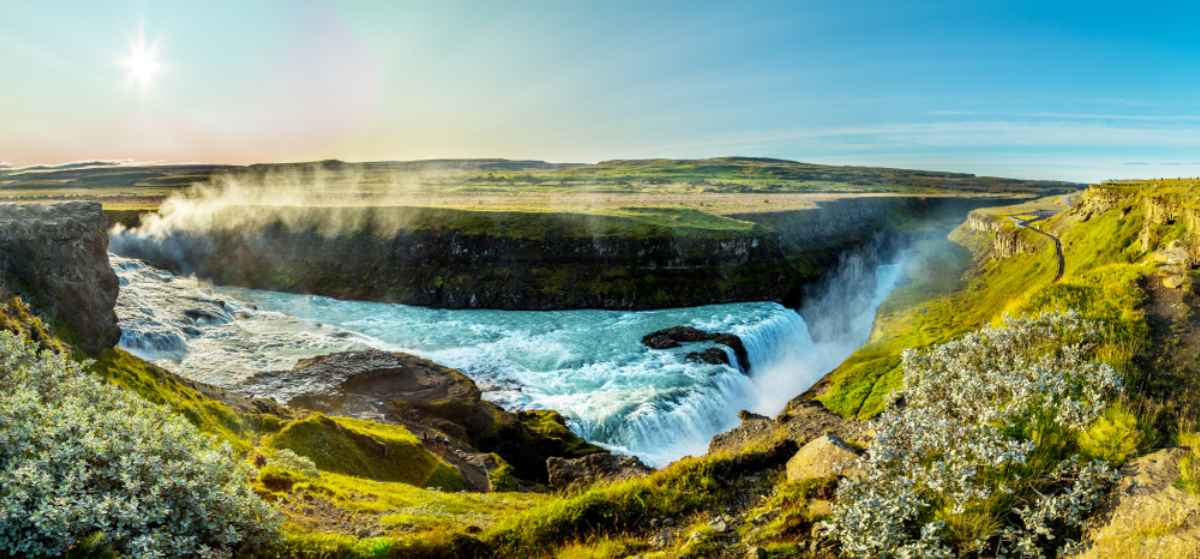
Highlights:
- Thingvellir National Park
- Silfra Fissure
- Almannagja Gorge
- Alpingi
- Geysir Geothermal Area
- Gullfoss Waterfall
Overnight In: Reykjavik or Selfoss
After arriving at Keflavik Airport, catch a rental agent shuttle outside the entrance and pick up your camper (that’s if you’re not taking a taxi, shuttle, or bus to Reykjavik, where you’re planning on picking up your rental). But whether you’re officially starting your road trip from the airport or the capital city, your first adventure will be traveling our famous Golden Circle route.
Thingvellir National Park will be your first stop. Check out the Silfra Fissure, where you can go snorkeling or diving between two continents (if you have enough time, depending on how early you landed). Take a short hike through Almannagja Gorge and visit Alpingi, Iceland’s first parliament (just in a primitive form).
Thereafter, take a short drive to Geysir Geothermal Area, where you can see the original geyser (and why we call them that in the first place). Although Geysir is dormant, its sister geyser, Stokkur, is still very active and erupts at least every 10 minutes by shooting liters of boiling hot water meters up into the sky. Your final stop of the day will be at Gullfoss, an impressive two-tiered waterfall totaling about 32 meters (105 feet). Choose whether you’d like to sleep over in Reykjavik or Selfoss.
Day 2: Exploring the South Coast’s Waterfalls & Black Sand Beaches
Driving Distance: 350 kilometers (217 miles)
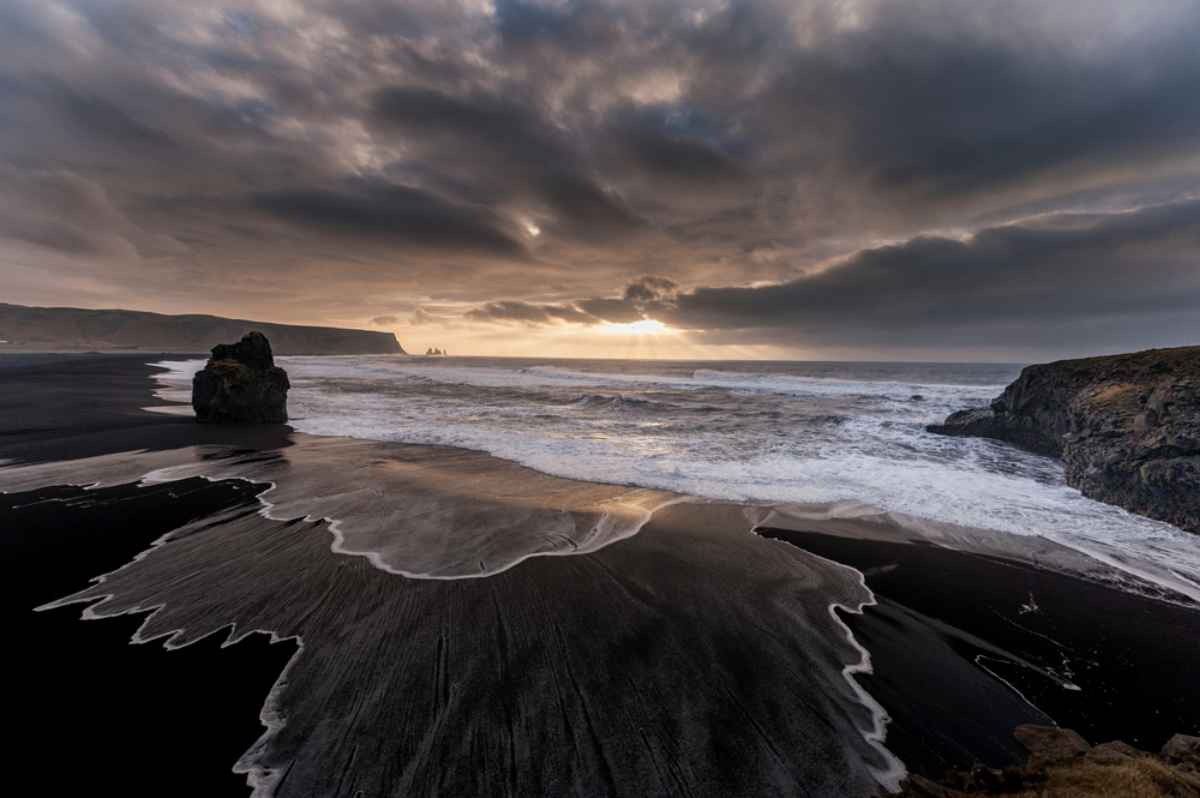
Highlights:
- Seljalandsfoss Waterfall
- Skogafoss Waterfall
- Reynisfjara Black Sand Beach
- Reynisdrangar Rock Formations
- Dyrholaey Rock Formation
Overnight In: Vik (we also suggest fueling up here)
Hit the Ring Road (aka Route 1) and drive southeast along the south coast. Your first stop will be Seljalandsfoss Waterfall, also known as “the waterfall you can walk behind” since this 60-meter (197-foot) tall waterfall has a pathway that leads you behind its veil of cascading water where you can look out over the Icelandic landscape.
Just a short drive further, you’ll see another of our impressive waterfalls, Skogafoss, standing 62 meters (203 feet) tall. While these are beautiful sights, and you’ll find plenty of hiking trails around Skogafoss, you need to ensure you hit the road again after lunch to Reynisfjara Black Sand Beach.
Here, you’ll be met by steep hexagonal basalt cliffs and see the Reynisdrangar Rock Formations rise from the sea. End the day off with Dyrholaey, another interesting rock formation, and then head to the town of Vik for some R&R.
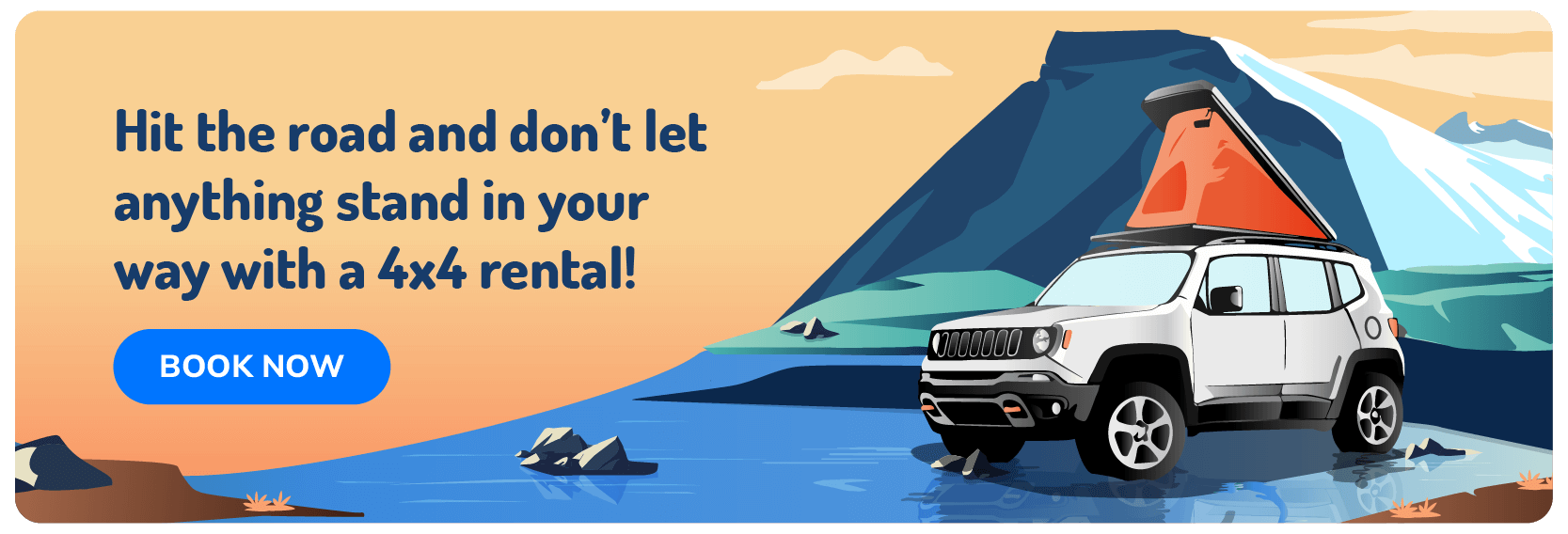
Day 3: Jökulsarlon Glacier Lagoon and Vatnajökull National Park
Driving Distance: 380 kilometers (236 miles)

Highlights:
- Jökulsarlon Glacier Lagoon
- Diamond Beach
- Vatnajökull National Park
- Svartifoss Waterfall
- Crystal Ice Cave (only open during the wintertime)
Overnight In: Höfn or Kirkjubæjarklaustur (we also suggest fueling up here)
You’ll have to have an early start to the day since you’ve got a jam-packed itinerary, and the first stop is a 2.5-hour drive away. Your first stop will be at Jökulsarlon Glacier Lagoon. It famously sits against Breidamerkurjökull Glacier, where gigantic chunks of ice break off and float around the lagoon with seals swimming about.
If you have enough time, we highly recommend you take one of the boat tours that will get you as close to the action as possible. After the lagoon, you’ll literally cross the road to visit its neighbor, Diamond Beach. At Diamond Beach, the sand is absolutely littered with ice floating down from the lagoon and washing ashore instead of floating out to sea.
When the light starts dancing on these pieces of ice, it looks like millions of diamonds glittering (hence the name). Then, you’ll need to take another short drive to the largest national park in Iceland, Vatnajökull. The park got its name from Vatnajökull Glacier, which can be found inside, which is prestigiously the largest glacier in Europe!
We highly recommend you take the time to hike the Svartifoss Trail to see our beautiful Svartifoss Waterfall. If you visit during the winter (the only time it’s open), we also suggest you book a spot on one of the ice cave tours that take you to explore the Crystal Ice Cave in Vatnajökull National Park. Once done, you can choose whether to stay in Höfn or Kirkjubæjarklaustur.
Day 4: Exploring Iceland’s Highlands
*Important Notice: Please keep in mind that this will be an F-roads adventure, characterized by unpaved, rougher roads, which include water crossings, and will legally require you to drive a 4x4. If you visit outside of summertime in Iceland, from June to September (the only time these roads are open), or this just doesn’t sound like your jam, create an alternative itinerary for this day, or simply jump to day 5.

Driving Distance: 250 kilometers (155 miles)
Highlights:
- Kerlingarfjöll Mountain Range with its Hot Springs
and/or
- Landmannalaugar, with its Hot Springs
and/or
- Secret Lagoon
or
- Super Jeep Tour to Thorsmörk Valley
Overnight In: Reykjavik
Today is the day you’ll find out how capable and durable your 4x4 campervan is by taking on the famous F-roads in Iceland and traveling through the Icelandic Highlands. This remote and rugged terrain may be challenging, but it’s even more rewarding, offering absolutely spectacular views. Your Highlands detour will start at the Gullfoss Waterfall, where you will take the F35 (also known as the Kjölur Route).
Head out to Kerlingarfjöll, a colorful mountain range due to the Rhyolite and minerals, where you’ll find plenty of hot springs and hiking trails. Another option if you’re pressed for time will be to visit Landmannalaugar, a similarly colorful display for the same reasons that’s also known for its hot springs. Either way, you’ll need your swimsuit close by.

Another alternative for those who want to experience the Highlands but don’t want the 4x4 challenges is to book a spot on one of the Super Jeep tours that will take you to explore Thorsmörk Valley. Unfortunately, most of these tours depart from Reykjavik, but that’s okay since you’ll need to return to the capital city after today’s itinerary anyway.
Alternatively, you can also just go to chill in the Secret Lagoon close to Fludir till you decide to head back to the capital city. Whichever option you prefer, you’ll finish your day by being back in Reykjavik.
Day 5: Reykjanes Peninsula and Departure
Driving Distance: 150 kilometers (93 miles)
Highlights:
- Bridge Between Continents
- Gunnuhver’s Geothermal Area
- Blue Lagoon
Overnight In: Reykjavik or On the Plane Back Home
Today will be used to explore the Reykjanes Peninsula. It sits practically next to the capital city and is known as somewhat of a geothermal wonderland. Your first stop will be the Bridge Between Continents, which is precisely what it sounds like. This short, little footbridge sits over the Mid-Atlantic Ridge, where the Eurasian and North American tectonic plates are pushing further and further apart with each passing year.
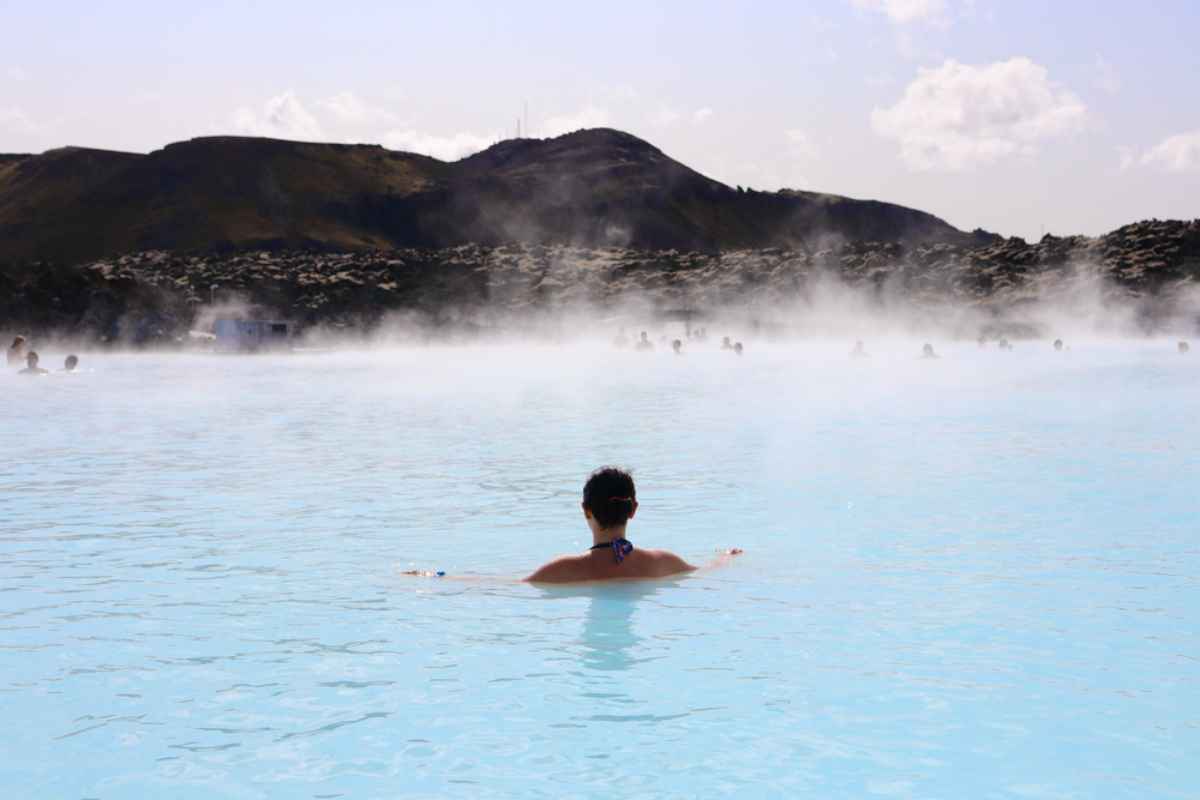
So, you will, quite literally, be standing between two continents on this bridge. Then, go and explore Gunnuhver’s Geothermal Area, where you’ll be met by an otherworldly scene; boiling and bubbling mud pits and steam vents literally blowing off steam. End your day in the most relaxing way; soaking in the healing waters of the Blue Lagoon.
What you do thereafter will depend on how you’ve planned your trip. You can either head back to Reykjavik and spend your final few days on the island exploring the capital or head straight to Keflavik Airport from the Blue Lagoon to catch your flight home.
Essential Tips for a Successful 5-Day Iceland Road Trip
Below, you’ll find what could almost be a guide on its own, choc-a-block with the most valuable tips and resources to make your campervan road trip a safe and memorable one:
Choosing the Right Campervan for Your Trip
When choosing a campervan for your road trip, you’ll need to consider the following:
The Size of Your Party
It makes no sense to rent a 6-sleeper campervan if you’re a couple on their honeymoon, and it also doesn’t make sense to try and cram a family of 4 into the most compact campervan you can find.
Remember, while you may get away with being somewhat cramped in a rental vehicle (taking the so-called punch for financial perks), a camper is dual-functioning. This will not only be your ride but your living space. We don’t recommend spending your holiday in barely tolerable living conditions. So, ensure the size fits!
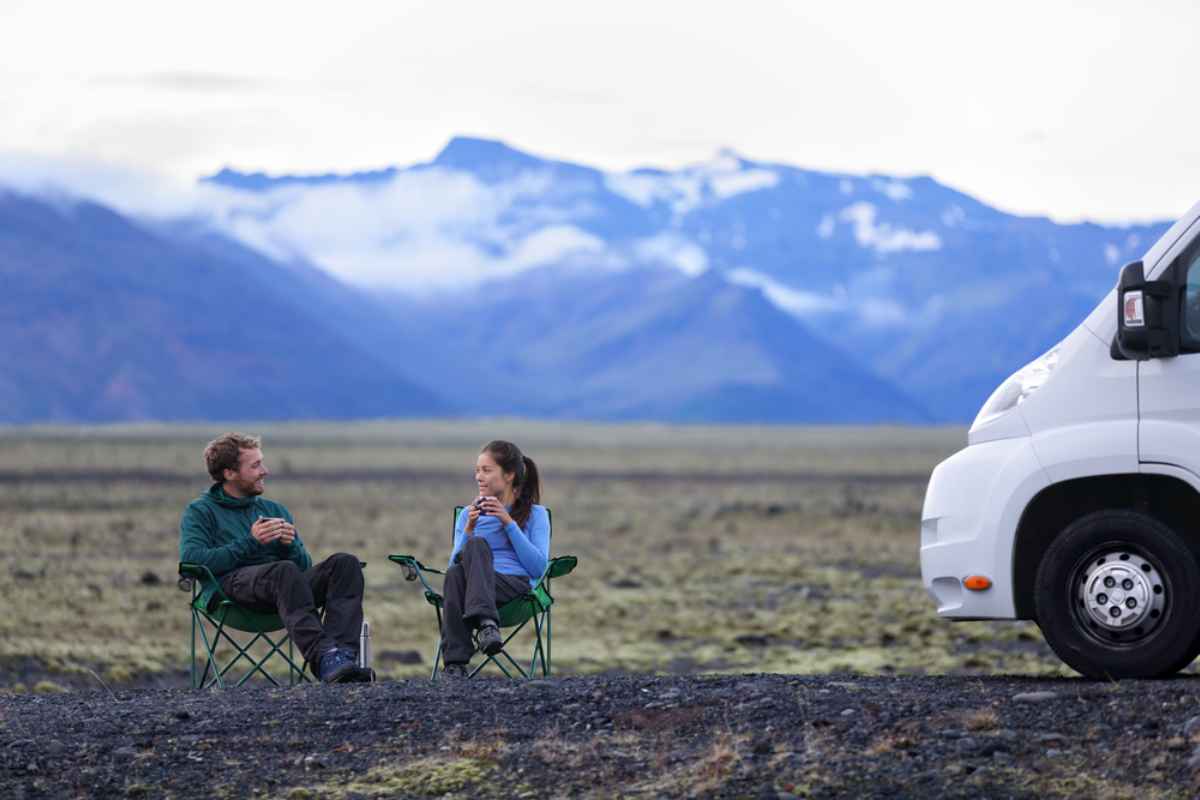
The Season
During our summer season, our weather and roads offer only the best of conditions. So you can pretty much skateboard through the country like Walter Mitty if you really want to. However, the moment our colder months creep in, the weather and road conditions can become challenging.
You’ll need to deal with ice and snow on the roads and even contend with things such as blizzards, our legendary 35+ kilometer-an-hour winds, etc. This means you’ll need to be looking at a campervan that’s durable and hardy enough to take these conditions on with all the seasonal bells and whistles on, like winter tires. Visitors also often make the mistake of assuming our fall and spring conditions will be just as pristine as our summer conditions.
But our winter conditions already start creeping in by late fall (especially in the northern parts of the country), and you’ll still find plenty of snow and ice in early spring that hasn’t melted yet. So, play it safe and go for the ride that will give you the most peace of mind.
Your Itinerary
The vehicle you choose will heavily depend on your trip itinerary. For example, if you’re planning on exploring the Highlands, there’s no way you’ll be able to do that without a 4x4 campervan since it’s a legal requirement for the F-roads. You should also chat with your rental agent about your planned itinerary to get some local insights since we have many roads that may not legally require a 4x4, but it’s most certainly recommended.
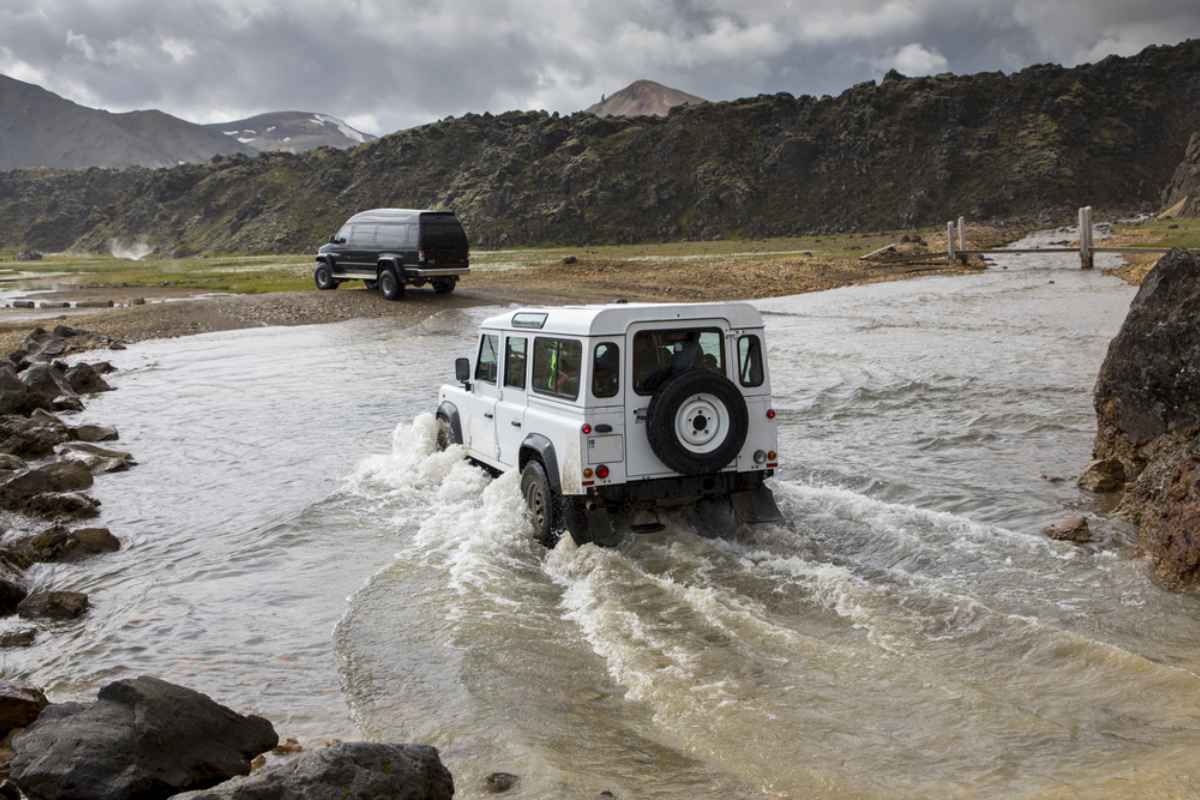
Your Budget
Most people holiday on a budget, and the vehicle you choose will also depend on how tight that budget can get. If you’re strapped for cash, you’ll have to take the more compact 4x4, no matter how badly you want to drive that luxury 4x4 SUV. So, your budget will also dictate which options are really available to you.
Your Personal Preferences
Then again, if you have recently won the lotto and money isn’t an issue, it’s your personal preferences that will lead the way in choosing your rental camper. Whether you want a compact camper that can easily zip in and out of places, a sturdy beast that will get you over the toughest terrain, or the largest camper you can find with all the luxury touches so you can cruise Iceland like a rock star – you will find an option that suits your personal preferences.
What You’re Used to Driving
This is also something very basic that many completely forget about when they get lost in all the features and functionality of a campervan. You’ll need to decide whether to rent a campervan with a manual or automatic transmission. We highly recommend you go for the option you’re used to back home. The Land of Fire and Ice is definitely not the place to suddenly learn how to drive a stick.
A Reputable Rental Agent
Whichever camper you decide to rent, also ensure that you rent it from a reputable rental agent. Check out online reviews and complaint platforms, and rather speak to the rental agent yourself than try to arrange things via a middleman who isn’t a local and won’t be able to advise you as someone on ground level.
Remember, a rental campervan is much more than just finding the perfect match for your Iceland adventure. It’s also about optimizing your trip, with places, routes, etc., that you may not know about, and also keeping you safe with all the necessary gear and equipment as well as insurance coverage needed for your specific trip itinerary.
Driving Safety and Road Conditions in Iceland
It’s very important to take special note of the rules of the road and our unique road conditions during your trip. This is not only for your own safety but also for the safety of others. So, while you’re cruising around the island, please keep the following in mind:
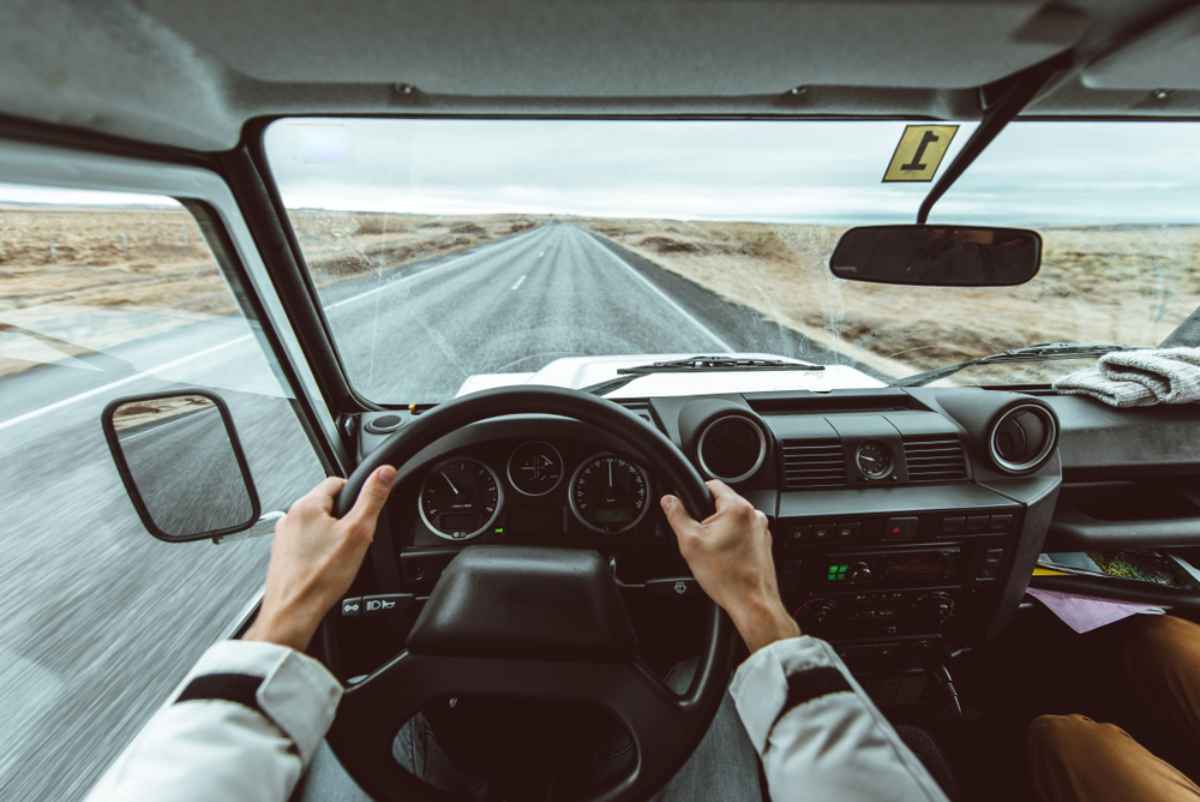
- Strictly adhere to our speed limits. These may not be the same as you’re used to back home, so keep your eyes peeled for any speed limit signs. As a general rule of thumb, you can use the following as guidelines:
- 90 km/h on paved roads (what we would consider main roads)
- 80 km/h on unpaved, gravel roads (decrease your speed to drive no faster than 50 km/h if the road becomes really rough)
- 50 km/h in urban or residential areas (once again, this can sometimes go down to 30, so keep your eyes open for the signs!)
- Remember that the right is the right side of the road to be driving on in Iceland.
- If you’re traveling with kiddos, please stick to our strict car seat regulations and laws.
Also, ensure that everyone in the car has their seat belts securely fastened whenever the car is in motion. - Always take note of road conditions. These can be influenced by two factors: the type of road it is and the weather. Ensure you have the right campervan with sufficient rental insurance and are properly prepared for the roads on your itinerary route.
- This could include paved and well-maintained roads, unpaved gravel roads, 4x4 required F-roads, and narrow mountain roads. Irrespective of the season, the Iceland weather can be fickle, so always keep an eye on Vedur for any sudden changes in the weather and Umferdin for any sudden road closures.
- Our roads are heavily impacted by the seasons. So, you already know you'll need to come prepared for some challenging drives during late fall, winter, and early spring. So, always ensure you reduce your speed and remain cautious and vigilant when driving under these conditions.
Also, don't attempt to drive on the F-roads or any other that have been closed - they're closed for good reason! And remember that certain vehicle gear and accessories, such as winter tires, are legally required throughout certain times of the year. Although most rental agents will ensure their campervans are compliant, it's still worth double-checking yourself.
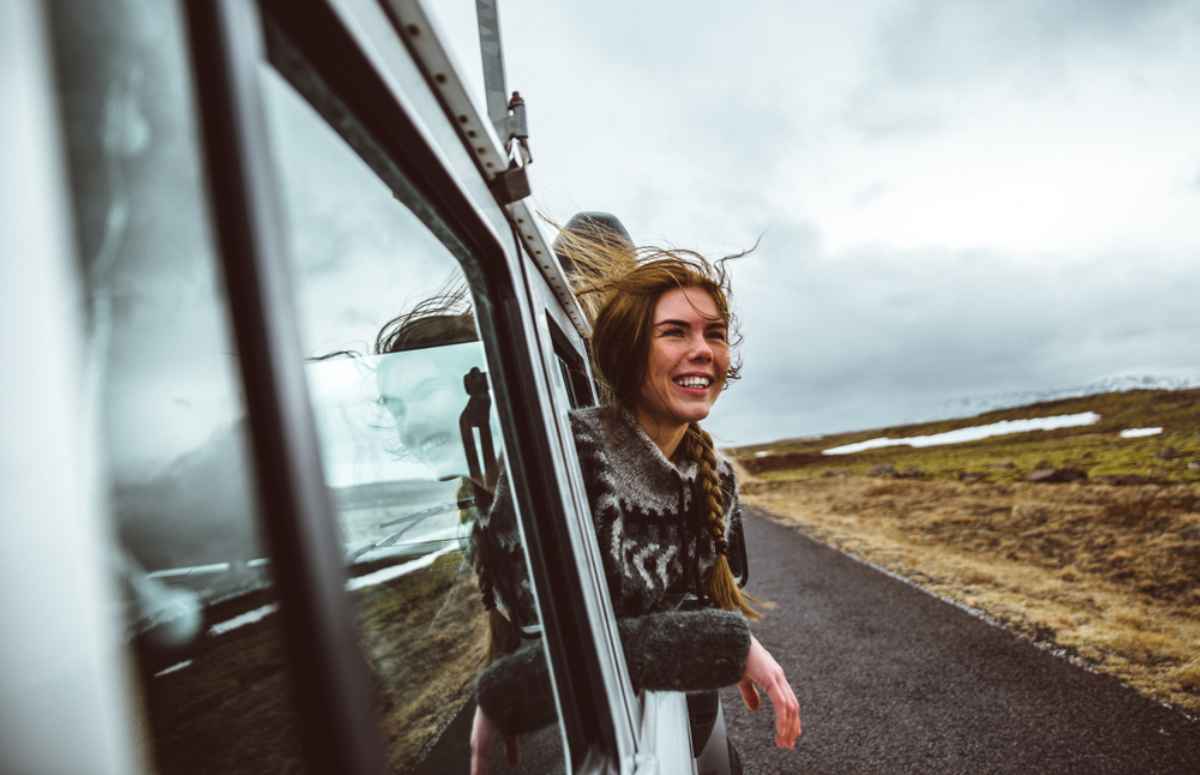
- Iceland is known for its legendary winds. By mid-winter, speeds can reach 35+ kilometers an hour. If there's one thing you need to remember when our winds are howling like this, it's to tightly hold onto the car doors whenever you open or close them.
It may sound silly, but our winds have actually ripped car doors right off their hinges. Also, try to park your campervan facing into the wind when it starts gaining momentum while you’re parked in the campground. This will help protect windows against any potential damage.
- Look out for any road signs in Iceland you may not be used to back home. For example, we have plenty of animal crossing warnings and single-lane bridges.
- Always fuel up when the tank is halfway empty, especially when you know you’ll be traveling in more remote areas. This will ensure you're not left stranded on the side of the road with an empty gas tank.
- Ensure you have a fully charged mobile phone and GPS while exploring the island. But also make sure you have downloaded offline maps as well as a few hard copies nearby so you don't end up in trouble when signals or technology fails you.
- Always keep a few extra rations of water and food (specifically the kind that doesn't spoil easily, such as nuts and energy bars). You don't need to go completely overboard and turn into an apocalyptic hoarder; just have enough in case you ever end up in a situation where you have to wait for assistance, and it might take a while for them to reach you.
- Save our emergency number on your phone: 112. This number will get you the help you need in most emergency situations, from vehicle breakdowns and medical emergencies to fires.
How to Save Money on Fuel, Camping, and Food
Below, you’ll find a few helpful tips on how to save even more money on fuel, camping, and food:
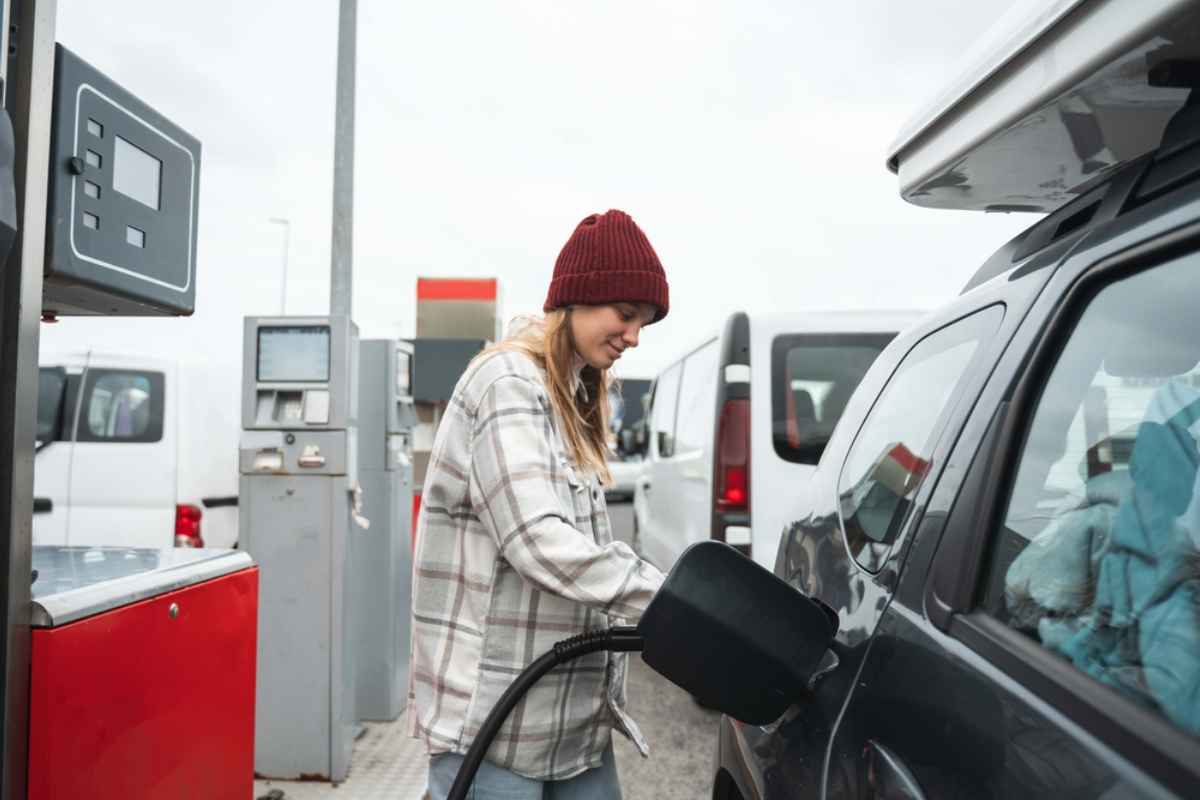
- Choose the most fuel-efficient campervan. This way, you'll need to refuel less and end up spending less on gas.
- Keep a slower and consistent speed of under 50 kilometers an hour - this has also proved to be a valuable fuel-saving tip, with you actually being able to save up to 25% of the fuel consumption you would've had if driving your "standard" speeds.
- If you plan on taking the "roads less traveled" in our more remote regions, like our F-roads, you'll need to budget accordingly since the rougher the roads, the harder your camper has to work and the more fuel it has to use. If your budget is tight, it's best to stick to the paved and well-maintained roads.
- Do proper research into the gas stations and the gas prices in Iceland. You won't find the same prices everywhere, and picking the right refuel spots can save you a lot of money.
- Take advantage of any discounts you can get a hold of. Many rental agents have formed agreements with local gas stations where you can get discounts when fueling up. You'll often find a chip or token attached to your car key that you must use at the pumps. If you purchase the Camping Card, you'll also get discounts on gas.
- One of the quickest ways to burn through money during your trip to Iceland is to grab takeaways or to dine out. The best way to save money is by buying groceries and cooking yourself. With a campervan, this is easy to do. Depending on which campervan you’ve opted for, you can either cook in your campervan kitchen or use outdoor cooking facilities, such as camping gear, grill areas at picnic or camping spots, or communal kitchen facilities at campgrounds.
- In the same way you have to do some research into where you can get the most bang for your buck when fueling up, you also need to do research into Iceland’s most budget-friendly grocery shops. For example, Bonus and Kronan are definitely two local favorites when you’re shopping on a budget.
- If you enjoy a beer or two, you’ll practically go bankrupt when buying alcohol in Iceland. So, if you’d like a drink with your meal, we suggest you stock up at the duty-free shop at Keflavik Airport upon your arrival.
Frequently Asked Questions About a 5-Day Iceland Itinerary
Below, you will find the answers to some of the most frequently asked questions about a 5-day Iceland itinerary:
Is 5 Days Enough to See Iceland?
Not even a year would be enough to see everything Iceland has to offer, but 5 days is definitely enough to at least prioritize some of our most famous must-sees.
Do You Need a 4x4 for This Itinerary?
Yes, you will need a 4x4 for our 5-day campervan itinerary – if you decide to take on our Highlands section. If not, you’ll probably be able to get by with a 2WD as long as you don’t attempt the trip during the colder months of the year.
What’s the Best Time of Year for a 5-Day Iceland Road Trip?
The best time for our 5-day Iceland road trip will be during the summer months (June to August) when the F-roads are open. But you can customize the itinerary to suit the colder months as well.

Is a Rental Really Necessary for a 5-Day Iceland Trip?
Yes, a rental really is necessary for a 5-day Iceland trip. There’s no way that you’ll be able to do it just by using the public transport system (not without a lot of effort and some legwork in between, anyway). Why we recommend renting a campervan is for additional comfort and financial perks.
What are Some of the Must-See Attractions We Will See on This 5-Day Iceland Itinerary?
Some of the must-see attractions on our 5-day campervan road trip route include Thingvellir National Park, Gullfoss Waterfall, Strokkur Geyser, Reynisfjara Black Sand Beach, Seljalandsfoss Waterfall, and Jökulsarlon Glacier Lagoon.
Can I Use Iceland’s Public Transport On my 5-Day Trip Through Iceland?
You most certainly can use Iceland’s public transport on your 5-day trip through Iceland, but it will probably be limited to town and city borders. Look into the Reykjavik Card if you plan on spending a couple of days in the capital city. This will give you unlimited hop-on-hop-off access to the city buses for a certain period of time.
Can I Use My Credit Card to Pay When Fueling Up My Campervan in Iceland?
Yes, a credit card is actually the most common and preferred way of paying for gas in Iceland. Just ensure you have a credit card with a chip and a pin. If you’re unsure, please contact your bank.
Do I Need an International Driver’s License to Rent and Drive a Campervan in Iceland?
No, as long as you have a valid driver’s license from your home country in a language that’s understood in Iceland, you won’t need an International Driver’s License to rent and drive a campervan here in Iceland.
What Do We Do When We Get Stuck Because of Sheep Crossing the Road in Iceland?
When you see sheep crossing the road in Iceland, you need to immediately decrease your speed and come to a complete standstill if necessary. Then, you will simply have to practice patients till they’ve passed.
There’s always a chance of encountering sheep on your road trip, especially when traveling in Iceland in September, during Rettir, when sheep from all across the country are being herded back home from the mountains, valleys, and wherever else they’ve been roaming around.
Do I Need to Book a Campsite in Iceland in Advance?
You definitely need to book a campsite in Iceland in advance if you plan on visiting the island during our busy summer season. Otherwise, you might not get a spot. During the winter season, you’ll need to book in advance for a different reason. Many campsites (and yes, we’re talking about the ones open all year round) require prior notice if you plan on camping there during what is considered our “down” season.
Final Thoughts – Making the Most of Your Campervan Adventure
If you take on our Iceland itinerary for 5 days, road-tripping through the island in your campervan, you’ll be able to see some of our main attractions and take advantage of our super affordable campsites in comfort and style.
So, whether you use our itinerary as is or just as inspiration for creating your own, you’ll be in for the experience of a lifetime (especially if you listen to all our advice!). So, what are you waiting for? Plan your trip, rent a motorhome in Iceland, and head out on the road trip of a lifetime in this magical country!

